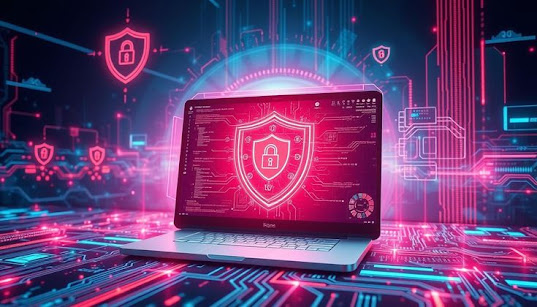25 Cybersecurity Trends & Blog Topics to Watch in 2025
25 Cybersecurity Trends & Blog Topics to Watch in 2025
In the fast-evolving world of technology, cybersecurity is no longer just a tech issue—it’s a life issue. From artificial intelligence to smart homes and quantum computing, the threats we face in 2025 are more advanced, automated, and dangerous than ever before. Whether you're a cybersecurity blogger, tech enthusiast, or just a curious digital citizen, understanding the key trends in cybersecurity is crucial this year.
Let’s dive deep into 25 powerful and relevant cybersecurity topics you can explore in 2025. These are separated by category, and each paragraph-style section provides unique value and insight in plain human language.
A. AI and Cybersecurity: A Digital Tug of War
In 2025, one of the most intense battlegrounds in cybersecurity is not humans versus hackers—it's AI vs. AI. On one side, companies are deploying AI-based tools to defend against threats. On the other, hackers are using generative AI and machine learning to create smart, stealthy attacks. This "battle of algorithms" is a digital arms race where both defense and offense are becoming more autonomous. A great blog topic here is “AI vs. AI in Cybersecurity: The Battle of Algorithms,” where you can explore how defensive AIs predict, prevent, and react to attacks in real-time.
But AI is not always on our side. Hackers have started using generative AI models to write phishing emails, create malware code, and even generate deepfake audio to manipulate people and systems. A blog titled “How Hackers Use Generative AI to Launch Smarter Attacks” could reveal how cybercriminals are automating their deception with stunning accuracy.
Meanwhile, cybersecurity tools powered by AI are not just reactive but proactive—able to scan massive networks, flag anomalies, and even isolate threats automatically. “Can AI Defend Against AI-Powered Malware?” would make a compelling post that examines whether defensive AI is strong enough to counter these evolving threats.
Lastly, “The Rise of Autonomous Cyber Defense Systems” would highlight how some companies are deploying AI bots that make security decisions faster than humans. These AI systems can block traffic, quarantine files, and roll out patches in seconds—raising the question: do we trust machines to protect our digital world?
B. Passwordless Future: A New Era of Logins
Passwords are dying, and 2025 is accelerating their funeral. Instead of remembering complicated strings, users are now logging in with biometrics, passkeys, or device-based recognition. A blog titled “Passwordless Authentication in 2025: Is It Really Safer?” would be ideal for explaining how this works, the technologies involved, and the pros and cons of ditching traditional passwords.
Tech giants are now promoting passkeys, which link your identity to your device or fingerprint—making it nearly impossible to steal. A blog post on “Passkeys vs Biometrics: What Will Dominate Online Security?” could compare these two major options and help readers choose the right one for them.
Then there's FIDO2, a global authentication standard that's gaining traction across platforms. A blog titled “How FIDO2 Is Revolutionizing User Authentication” can walk users through how FIDO2 is making logins both seamless and more secure, possibly changing the face of internet security forever.
C. IoT and Smart Devices: A Security Time Bomb?
From smart TVs to doorbells and refrigerators, every device in your home is connected—and that means every device is a potential gateway for hackers. “Cyber Hygiene Checklist for Your Smart Home in 2025” would be a must-read blog post to help users understand how to keep all their connected devices clean, secure, and updated.
As more homes install IoT devices, security takes a back seat in most cases. A blog titled “How to Secure IoT Devices: A Homeowner’s Guide” could offer practical steps for average users to strengthen their smart home security without needing expert knowledge.
The scary part? Some smart appliances are equipped with cameras and microphones, and many users have no idea how much data is being collected. “Can Smart Appliances Be Used to Spy on You?” would be a provocative blog that discusses the potential for abuse, surveillance, and privacy invasion right from your kitchen or living room.
D. Human Error and Awareness: Still the Biggest Threat
Even with advanced AI and tech in place, the human brain remains the weakest link in cybersecurity. In 2025, the need for cybersecurity awareness among everyday users is more urgent than ever. A helpful blog like “Cybersecurity Awareness Tips for Non-Tech Users in 2025” could simplify threats and offer practical advice in non-technical language.
One of the most effective hacking methods still is social engineering, where people are tricked into giving away sensitive information. A blog titled “Top Social Engineering Tactics to Watch in 2025” would educate readers on how attackers manipulate people psychologically rather than technically.
And now, with deepfake audio and video, even experienced users are being fooled. Imagine receiving a call from your "boss" asking for urgent payment—a fake generated by AI. A blog titled “How Deepfake Scams Are Fooling Even Tech-Savvy Users” would be eye-opening and essential reading for anyone doing business online.
E. National and Global Threats: Cyber as a Weapon
Cybersecurity is no longer just an individual or corporate issue—it’s now a matter of national security. In 2025, state-sponsored cyber attacks are growing in number and sophistication. A blog like “State-Sponsored Cyber Attacks in 2025: What to Know” can break down recent high-profile attacks, motivations behind them, and which countries are the biggest players.
“Cyber Warfare: The Next Battlefield for Global Powers” is another heavy-hitting topic. It can explore how countries are developing cyber armies, using attacks as weapons of influence and disruption, and preparing for digital conflicts alongside traditional ones. This is the dark future where code can crash power grids or elections.
F. Quantum Threats: Cracking the Code of Tomorrow
One of the biggest threats to cybersecurity is not from today’s hackers—but tomorrow’s supercomputers. Quantum computing is predicted to break many of the encryption methods that protect our data today. A blog titled “Quantum Computing vs Encryption: Are We Prepared?” would take a big-picture look at how this tech could change the security landscape forever.
Some companies are already deploying post-quantum encryption systems in preparation. A great blog like “Post-Quantum Encryption Rollouts: What Businesses Must Do” can serve as a guide for tech companies, IT leaders, and concerned businesses looking to future-proof their systems before it’s too late.
G. Business Security: A Survival Priority
Businesses, both small and large, face increasing cyber threats. In fact, small businesses are often easier targets. “Top Cybersecurity Tools for Small Businesses in 2025” could be a super helpful post listing antivirus software, firewalls, endpoint protection, and AI monitoring tools suited to smaller budgets.
Another rising area is cyber insurance. A blog titled “Cyber Insurance: Is Your Business Covered in the AI Age?” can explore what cyber insurance is, who needs it, and how to choose a policy that covers data breaches, ransomware, and more.
Finally, Zero Trust Architecture is no longer a buzzword—it’s becoming the standard for serious cybersecurity strategies. A post like “Zero Trust Architecture: The New Standard in Business Cyber Defense” would explain the concept in simple language and help organizations understand why trusting nothing is the new best practice.
H. Careers and Trends: The Job Boom Continues
With threats growing, so are career opportunities in cybersecurity. In 2025, this field is booming. A post titled “Top Cybersecurity Skills in Demand in 2025” could guide students and job seekers on which programming languages, certifications, and soft skills are most wanted in the industry.
Another great idea is “How to Start a Career in Cybersecurity in 2025,” where you can list online courses, certifications like CompTIA Security+, CEH, or CISSP, and job roles such as security analyst, penetration tester, or cyber consultant.
Because of the remote work trend, a blog like “Remote Work and Cybersecurity: Best Practices for 2025” is also very timely. Many people still don’t realize how risky public Wi-Fi, shared devices, or outdated VPNs can be.
I. Emerging Tech and Experimental Threats
Technology never stands still. Neither do the threats. In 2025, Edge AI is gaining traction—devices that process data at the edge of networks, like your phone or IoT sensors. A blog titled “Edge AI Security: Protecting Data at the Source” can explain how edge computing both improves speed and opens new vulnerabilities.
Then there are digital twins—virtual replicas of real-world systems used in smart cities, manufacturing, and hospitals. “Digital Twins in Smart Cities: A New Cybersecurity Challenge” would make a brilliant post, discussing how hacking a simulation could have real-world consequences.
Final Thoughts
Cybersecurity in 2025 is not just about firewalls and antivirus software—it’s about understanding how technology, humans, and threats interact in a hyper-connected world. These 25 topics represent the most relevant, trending, and future-proof areas to explore if you’re blogging about cybersecurity this year.
If you’re a blogger, creator, or IT professional, each topic above can be turned into a dedicated long-form post to help your audience stay ahead of cyber threats. And if you're a reader? Consider this your roadmap for navigating the evolving digital battlefield.




Comments
Post a Comment